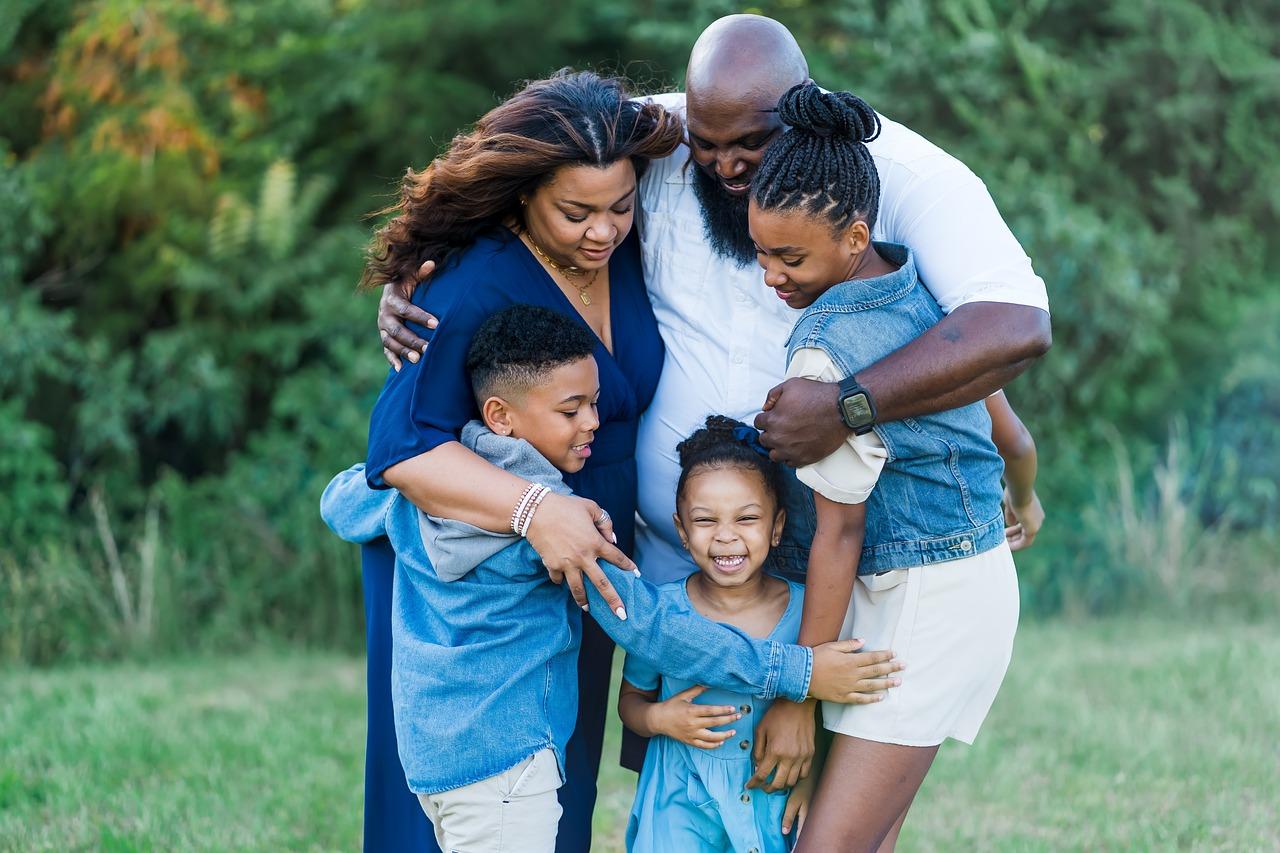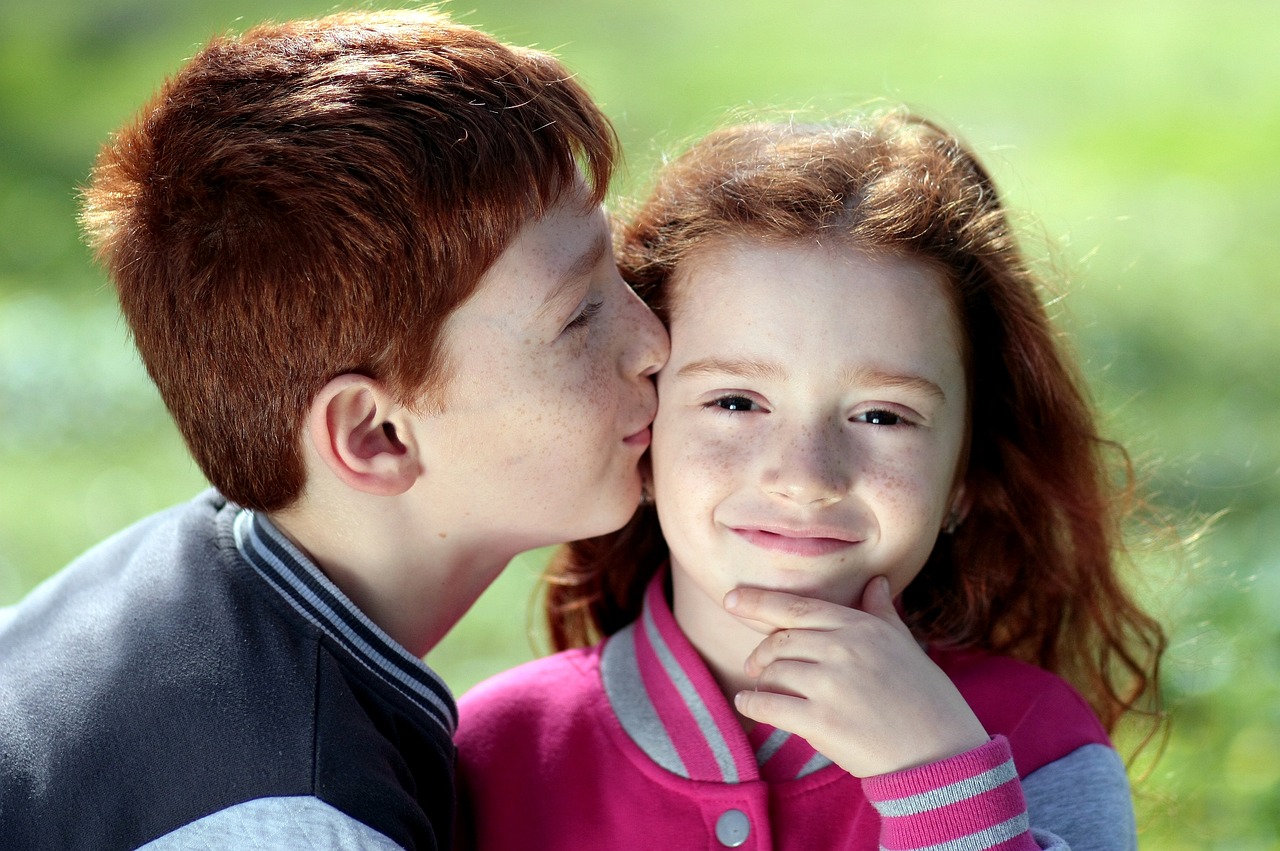1. Family Therapy

I. Overview of different family therapy models (what is family therapy?) and their applications
We can describe a family as a tangled ball of yarn. Each strand represents a member of a family intertwined in a complex web of relationships. There are various family therapy types, each with its unique approach. Structural therapy focuses on restructuring family dynamics, while strategic therapy emphasizes problem-solving techniques. Narrative therapy delves into the stories families tell about themselves, altering narratives for healing. Bowenian therapy emphasizes intergenerational patterns, while systemic therapy views the family as interconnected. These models offer diverse lenses through which therapists can understand and address family issues.
II. Setting Goals and Expectations in Family Therapy
Setting clear goals and expectations is crucial in family therapy. It involves collaboration between the therapist and family members to identify desired outcomes and establish a roadmap for therapy. Goals may range from improving communication to resolving conflicts or addressing specific challenges. Expectations should be realistic, as they acknowledge that therapy requires time and effort from all involved.
III. The Therapeutic Process and Stages in Family Therapy
Family therapy typically progresses through several stages. The initial stage of the therapeutic process involves assessment and building rapport. Next comes goal-setting and planning interventions, followed by the implementation phase, where strategies are implemented. Throughout therapy, there’s ongoing evaluation and adjustment of approaches as needed.
IV. Measuring Outcomes and Effectiveness of Family Therapy
Measuring family therapy outcomes involves assessing changes in family functioning, communication patterns, and individual well-being. Therapy Outcomes can be measured by self-reports, observational data, or standardized assessments. Effectiveness is evaluated based on the extent to which therapy goals are achieved and improvements are sustained over time.
2. Family Therapy and Interventions
I. Comparative Effectiveness of Different Family Therapy Models
Family therapy is like a toolbox filled with various approaches, each offering unique tools to tackle different challenges. Take systemic therapy, for instance. It sees the family as a complex system, whereas structural family therapy focuses on reshaping family dynamics. Then there’s narrative therapy, which explores the stories families tell about themselves. No one model reigns supreme; effectiveness often depends on the family’s specific needs and the therapist’s skills.
II. The Role of Family Therapy in Treating Adolescent Behavioral Problems
Adolescence – a rollercoaster ride of hormones and emotions. When behavioral issues rear their head, family therapy can be a game-changer. It’s not just about fixing the teen; it’s about transforming the family dynamic. Therapists can address underlying issues, improve communication, and foster healthier relationships by involving everyone in the process. Family therapy can significantly reduce adolescent behavior problems and strengthen family bonds.
III. Integrating Individual and Family Therapy Practices
Sometimes, it’s not just the family that needs attention – individuals within the family may struggle. Integrating individual and family therapy can be like weaving together two strands of a rope for added strength. By addressing individual and relational issues, therapists can create a more comprehensive approach to healing. This therapy integration approach can lead to better outcomes for individuals and families.
IV. Challenges and Strategies in Engaging Families in Therapy
Family engagement in therapy can sometimes feel like herding cats – challenging but not impossible. Common hurdles include resistance, scheduling conflicts, and cultural differences. Strategies like offering flexible scheduling, involving family members in treatment planning, and building rapport can help overcome these challenges.
3. Family Systems Theory
I. The Concept of Homeostasis in Family Systems
Think of a family as a finely tuned machine constantly striving for balance and stability. This is the essence of homeostasis in family systems. Just like our bodies regulate temperature to maintain equilibrium, families have mechanisms to preserve their own emotional balance. When one member experiences distress, the system theory adapts to restore interconnectedness, sometimes even perpetuating unhealthy patterns to maintain the existing state.
II. Differentiation of Self Within the Family
Ever feel like you’re trying to find your own voice in a chorus of family opinions? That’s the challenge of differentiation—carving out your identity while still being part of the family symphony. Finding the sweet spot between independence and staying linked to your family heritage is important. It’s all about asserting yourself while emotionally tethered to your family’s story.
III. Triangulation in Family Relationships
Picture a game of emotional tag, where two family members draw in a third to alleviate tension or avoid conflict. That’s triangulation in action. Whether a parent confides in a child or siblings form alliances, triangulation can create intricate webs of relationships that can either strengthen or strain family bonds.
IV. Family Roles and Patterns Across Generations
Have you ever noticed how certain traits or behaviors repeat across generations? That’s the legacy of family roles and patterns. These roles often play out unconsciously, from the responsible eldest child to the rebellious black sheep. These roles shape family dynamics for years to come. Understanding these generational patterns can offer insights into our behaviors and relationships.
4. Attachment Theory
I. Secure vs. Insecure Attachment Styles
Imagine a baby nestled in their caregiver’s arms, feeling safe, loved, and cherished. This is the foundation of secure attachment. In contrast, insecure attachment arises when a child doesn’t consistently receive comfort and support from their caregiver. Caregiver bonds are pillars for secure attachment styles.
II. The Role of Attachment in Adult Relationships
Attachment doesn’t end in childhood; it shapes our adult relationships too. Those with secure attachment tend to have trusting, supportive relationships, while those with insecure attachment may struggle with intimacy and rely on unhealthy coping mechanisms.
III. Interventions for Attachment Disorders
Healing attachment disorders involves creating safe, nurturing environments where individuals can learn to trust and form healthy connections. Therapies like attachment-based therapy focus on building secure relationships and addressing underlying trauma.
IV. Cross-Cultural Perspectives on Attachment
Individual experiences don’t solely shape attachment; culture plays a significant role too. Cross-cultural attachment is universal as cultural practices and beliefs influence caregiving behaviors and attachment patterns. For example, cultures that prioritize interdependence may foster different attachment styles compared to those emphasizing independence.
5. Parenting Styles and Their Impact
I. Outcomes of Different Parenting Styles on Child Development
Parenting styles are like ingredients in a recipe – they can make or break the dish. The authoritative approach is like adding just the right amount of spice – it fosters independence and confidence in children. On the flip side, authoritarian parenting is like pouring in too much salt – it can leave kids feeling stifled and resentful. Permissive parenting is like using too little seasoning – it might taste good in the short term, but it lacks structure and guidance. And neglectful parenting is like forgetting the main ingredient altogether – it can have severe consequences for child development.
II. The Role of Cultural Context in Parenting
Just as different cuisines have their own unique flavors, cultural contexts shape parenting styles. What works in one culture may not work in another. For example, collectivist cultures often prioritize community and harmony, leading to more authoritarian parenting styles. In contrast, individualistic cultures value personal autonomy, leading to more authoritative approaches. Understanding these cultural nuances is crucial in supporting diverse families.
III. Parenting Styles and Adolescent Self-Esteem
Your parenting style shapes your adolescents’ self-esteem. Authoritative parenting provides the perfect blend of support and boundaries, nurturing healthy self-esteem. Authoritarian parenting, however, can leave adolescents feeling inadequate or rebellious. Permissive parenting may result in inflated egos that lack substance, while neglectful parenting can leave adolescents feeling unseen and unworthy.
IV. Impact of Parenting Styles on Academic Achievement
Parenting styles seriously affect children’s academic achievement. Authoritative parents provide the right balance of encouragement and structure, setting their children up for academic excellence. Authoritarian parents may push too hard, leading to burnout or rebellion. Permissive parents might not provide enough guidance, while neglectful parents may not prioritize education at all, leaving their children to flounder academically.
6. Marital Conflict and Its Effects on Children
I. Coping Mechanisms for Children of Conflicted Marriages
Kids find themselves caught in the middle of a stormy sea, with parents’ arguments crashing like waves around them. The coping mechanism can feel like trying to stay afloat. Children in conflicted marriages or seeing divorce often find solace in simple routines, hobbies, or spending time with supportive friends and family. Expressing their feelings through art, journaling, or talking to a trusted adult can also be a lifeline for children’s mental health.

II. The Role of Mediation and Counseling in Marital Conflict
When the storm clouds of marital conflict gather, mediation and counseling can be the lighthouses guiding couples through troubled waters. Mediation offers a neutral space for open communication and problem-solving, while counseling provides tools to navigate emotional turbulence and rebuild connection. These interventions aim to resolve immediate conflicts and equip couples with skills to weather future clashes.
III. Long-Term Effects of Parental Conflict on Adult Relationships
The echoes of parental conflict can have long-term effects on adults. Adults who grew up in homes rife with marital discord may struggle with intimacy, trust, and communication in their own relationships. The scars of childhood wounds can influence patterns of conflict resolution and attachment styles. It highlights the enduring impact of parental discord on adult emotional well-being.
IV. Strategies for Protecting Children from the Effects of Marital Conflict
Just as sailors brace for rough seas, parents can make protective strategies to shield their children from the tempest of marital discord. Maintaining open communication, shielding children from adult conflicts, and fostering a sense of stability through consistent routines are necessary. Seeking support from trusted professionals and prioritizing self-care can also strengthen parental resilience.
7. Substance Abuse and Family Dynamic
I. Codependency and Enabling Behaviors in Families
When one partner constantly supports the other, even to their own detriment. This is the dance of codependency and enabling behaviors in families affected by substance abuse. Codependency involves excessive reliance on each other for validation and support, often enabling the substance user to continue their harmful behavior. It’s like a tangled web of love and dysfunction that can be challenging to break free from.
II. Family-Based Prevention Programs for Substance Abuse
Family-based prevention programs play a crucial role in preventing substance abuse before it takes hold. These programs involve the whole family and teach communication skills, healthy coping mechanisms, and strategies to resist peer pressure. By strengthening family dynamics and fostering open dialogue, these programs empower families to navigate life’s challenges without turning to substances.
III. The Impact of Parental Substance Abuse on Child Development
When a parent struggles with substance abuse, the ripple effects can be felt throughout the family, especially by the children. Parental impact can disrupt attachment, impair cognitive development, and increase the risk of emotional and behavioral problems in children. It’s a heartbreaking reality highlighting the urgent need for support and intervention.
IV. Recovery and Relapse: Family Roles and Support Systems
Recovery from substance abuse is a journey, not a destination. And families play a vital role in supporting their loved ones along the way. Each family member may take on different roles – the caregiver, the cheerleader, and the accountability partner. But even with the best intentions, relapse can happen. That’s why a robust support system is essential, providing encouragement, understanding, and a safety net for those moments of struggle.
8. Mental Illness in a Family Context
I. Caregiver Burden and Coping Strategies
Being a caregiver for a loved one with mental illness can be like juggling flaming torches – overwhelming and exhausting. Caregiver burden can take a toll on caregivers’ mental and physical health. But fear not because there are strategies to help douse those flames. From seeking support groups to practicing self-care and setting boundaries, caregivers can find ways to manage their load and keep those torches aloft without burning out.
II. Family-Based Interventions for Mental Illness
When it comes to mental illness, families can be a powerful source of support or a breeding ground for chaos. Family interventions swoop in like superheroes, offering strategies to strengthen family dynamics and support the individual with mental illness. Whether it’s family therapy, psychoeducation, or communication skills training, these interventions bring families together, armed with the tools to conquer mental health challenges as a united front.

III. The Stigma of Mental Illness in Families
Shadows of shame and secrecy stigmatize mental illness in families. But it’s time to shine a light on it. By opening up conversations, challenging stereotypes, and embracing empathy, families can banish the stigma and create a safe space where mental health is not only accepted but celebrated.
IV. Genetic and Environmental Factors in Family Mental Health
Nature versus nurture – it’s the age-old debate. But when it comes to mental health in families, it’s a bit of both. Genetic factors can predispose individuals to certain conditions, while environmental factors like upbringing, trauma, and stress can also play a significant role. Understanding this dynamic duo empowers families to navigate their mental health journey with knowledge and resilience.
9. Trauma and Its Effects on Families
I. Family Resilience and Coping with Trauma
Trauma can fracture familial bonds because it disrupts the harmony of relationships. When adversity strikes, families have an incredible capacity to adapt and bounce back. They draw strength from their bonds, supporting each other through the darkest times. From shared rituals to open communication, resilience makes families find ways to cope with these hard times and emerge even stronger on the other side.
II. Intergenerational Transmission of Trauma
Trauma can echo through generations, leaving its mark on family dynamics and relationships. From the scars of fighting to the shadows of abuse, the pain of the past can cast a long shadow over the present. But awareness is the first step towards breaking the cycle. Acknowledging the intergenerational trauma, family impact is guaranteed to heal old wounds and create a brighter future for future generations.
III. Therapeutic Approaches for Families Experiencing Trauma
Therapy can be a guiding light in the journey toward healing. Therapeutic approaches such as trauma-focused cognitive behavioral therapy and family systems therapy offer pathways to healing for families navigating trauma. These approaches provide a safe space for families to explore their experiences, process emotions, and learn coping strategies to rebuild their lives.
IV. The Role of Community and Social Support in Trauma Recovery
No family is an island, and in times of crisis, the strength of community support shines brightest. Whether it’s a shoulder to lean on, a listening ear, or practical assistance, the support of friends, neighbors, and community organizations can make all the difference in trauma recovery. Together, families and their communities form a safety net.
10. Child Abuse and Neglect
I. Prevention and Early Intervention Strategies
Prevention and early intervention strategies work like a shield, keeping kids safe from harm. They’re like superheroes stepping in before any trouble starts. These strategies do things like teaching parents’ positive ways to discipline and offering support to families who need it. By spotting problems early and acting fast, they can stop abuse and neglect from happening. Ultimately, this gives kids a better, safer path ahead.
II. The Role of Social Services in Child Welfare
Social services are the frontline defenders of child welfare, swooping in when families need support the most. They’re like guardian angels, offering resources, counseling, and protection to vulnerable children and families. From investigating reports of abuse to providing foster care placements, social services play a vital role in ensuring children are safe and nurtured.
III. Psychological Therapies for Survivors of Abuse and Neglect
Healing the wounds of abuse and neglect requires more than just bandages – it requires a compassionate approach to psychological therapy. Therapies like cognitive-behavioral therapy (CBT) and trauma-focused interventions offer survivors a safe space to process their experiences and rebuild their sense of self. It’s like giving them a roadmap to navigate the maze of trauma and guide them toward healing.
IV. Legal and Ethical Considerations in Cases of Child Abuse
When it comes to child abuse, the law becomes a shield of justice, ensuring perpetrators are held accountable, and children are protected. Legal considerations loom large in these cases, balancing the child’s rights with due process for all involved. It’s a delicate dance of justice, but essential for safeguarding the most vulnerable.
11. Adoption and Foster Care
I. Psychological Adjustment of Adopted and Foster Children
Imagine a tiny seed floating in the wind, looking for suitable soil to take root and grow. That’s what it’s like for adoption and foster care to find their place in a new family. It’s a journey of ups and downs as they adapt to new surroundings, build trust, and form attachments. Some kids might breeze through it, while others may struggle with feelings of loss or identity. Psychological adjustment includes love, patience, and support. They need to flourish like the resilient little flowers.
II. The Impact of Open vs. Closed Adoption on Identity Formation
You can picture two paths stretching before you: one bathed in sunlight, the other shrouded in shadows. That’s the difference between open and closed adoption regarding identity formation. In an open adoption, children have the chance to explore their roots, connecting with their birth families and weaving together the tapestry of their identity. On the flip side, closed adoptions may leave kids feeling like pieces of a puzzle with missing edges, wondering about their origins and yearning for answers.
III. Support Systems for Adoptive and Foster Families
Isn’t there always a faithful companion supporting every main character? Well, for adoptive and foster families, that sidekick comes as support systems. From social workers and therapists to support groups and online forums, there’s a whole squad ready to swoop in and lend a helping hand. These networks provide a safe space to share experiences, seek advice, and recharge those parental superpowers when the going gets tough.
IV. Challenges in the Adoption and Foster Care System
Let’s spotlight the elephant in the room: the challenges lurking within the adoption and foster care system. From bureaucratic red tape to shortages of loving homes, there are hurdles aplenty. Kids may bounce from placement to placement like pinballs, leaving scars that take time to heal. But despite these obstacles, champions are fighting to improve the system, one policy change and one loving family at a time.
12. LGBTQ+ Families
I. Parenting Challenges and Strategies in LGBTQ+ Families
Parenting is a wild ride but add in the unique challenges faced by LGBTQ+ families, and it’s like navigating uncharted waters. From explaining diverse family structures to kids to dealing with external judgment, there’s a lot on the table. But fear not! LGBTQ+ families are masters of resilience. Strategies like open communication, finding supportive communities, and embracing diverse role models can help smooth out the bumps along the way.
II. The Impact of Societal Discrimination on Family Mental Health
Societal discrimination casts a dark shadow over LGBTQ+ families, taking a toll on their mental well-being. Whether it’s facing prejudice at school, work, or even in their own neighborhoods, the constant battle against discrimination can weigh heavily. But don’t underestimate the power of love and solidarity within these families.
III. Legal and Social Recognition of LGBTQ+ Families
The sweet sound of progress! Legal and social recognition of LGBTQ+ families is gaining momentum worldwide. From marriage equality to adoption rights, strides are being made to ensure these families are seen, heard, and respected. But there’s still work to be done. Advocacy efforts continue to push for equal rights in areas like parental recognition and access to healthcare, ensuring that every LGBTQ+ family can thrive.
IV. Support Networks and Community Resources for LGBTQ+ Families
In the rainbow-colored tapestry of LGBTQ+ communities, support networks and resources abound. From local PFLAG chapters to online forums and LGBTQ+ family-friendly events, there’s a lifeline for every family member. These networks offer practical advice, resources, and a sense of belonging and validation. Because when it comes to building strong, resilient families, it truly does take a village – or, in this case, a vibrant and diverse community rallying together.
13. Cultural and Socioeconomic Influences on Family Mental Health
I. The Impact of Poverty on Family Dynamics and Mental Health
The constant struggle to make ends meet can strain relationships, leading to increased stress and conflict within the family. Children may feel the weight of financial instability, impacting their emotional well-being and academic performance. Parents trying to navigate the maze of poverty may experience heightened anxiety and depression.

II. Cultural Competency in Family Therapy
Family therapists are like cultural chameleons, adapting their approach to fit the diverse backgrounds of the families they serve. Cultural competency means understanding and respecting the values, beliefs, and traditions of different cultural groups. It’s about creating a safe space where families feel seen and heard, free from judgment or bias.
III. The Role of Religion and Spirituality in Family Life
Religion and spirituality are like the glue that binds families together. It provides a sense of purpose and meaning amidst life’s challenges. For some families, rituals and prayers offer solace during difficult times. However, religious beliefs can also be a source of conflict, especially when different family members hold contrasting views.
IV. Socioeconomic Disparities and Access to Mental Health Services
Imagine standing at the gates of a castle, but the drawbridge is up – that’s what it feels like for families facing socioeconomic disparities when trying to access mental health services. Limited financial resources, lack of insurance, and geographic barriers can create daunting obstacles to getting the help they need. Closing the gap in access to mental health services requires addressing systemic inequities and advocating for policies that ensure all families have equal opportunities for support and care.
14. Elderly Care and Family Dynamics
I. Managing Caregiver Stress and Burnout
Caring for our loved ones as they age is an act of love and devotion, but it can also be incredibly challenging. It’s natural to feel overwhelmed, but it’s crucial to recognize the signs of stress and burnout. Taking breaks, seeking support from others, and practicing self-care help caregivers keep going.
II. Decision-Making in Elderly Care Within Families
Making decisions about the care of elderly family members can be as tricky as navigating a maze blindfolded. Each family member may have their ideas and concerns, but open communication and compromise are the compasses that can guide us through. Whether discussing in-home care options or exploring assisted living facilities, coming together as a family to make decisions ensures that everyone’s valued.
III. The Impact of Aging on Family Roles and Relationships
Aging doesn’t just affect our bodies; it also reshapes the landscape of family dynamics. Once clear-cut roles may blur, and relationships may transform. It’s like rearranging the puzzle pieces – sometimes frustrating, but ultimately leading to a new picture of familial love.
IV. Support and Resources for Families Caring for Elderly Members
Families responsible for caring for elderly members shoulder a significant duty. From caregiver support groups to respite care services, a wealth of assistance is available to lighten the load. It’s about reaching out, tapping into these lifelines, and knowing that we’re not alone on this journey.
15. Work-Family Balance
I. The Impact of Telecommuting on Family Life
Telecommuting is the magic word that promises freedom from rush hour traffic and office cubicle blues! But what about its impact on family life? Telecommuting can blur the lines between work and home, making it challenging to switch off and be fully present with your family. But it also means more flexibility to attend your kid’s soccer game or sneak in a midday hug. It’s a mixed bag.
II. Strategies for Achieving Work-Life Balance
The elusive work-life balance – like chasing a unicorn through a forest of deadlines and family obligations. There are strategies to tame this mythical beast. Set boundaries – carve out sacred family time and guard it fiercely. Prioritize ruthlessly – not every email requires an instant response. And don’t forget to unplug – yes, that means putting down the smartphone and stepping away from the laptop. Balance is within reach, my friends!
III. The Role of Employers in Supporting Work-Family Balance
Employers hold the power to make or break the equilibrium. Flexible schedules, childcare assistance, and remote work options all count as employer support. It’s time for employers to step up and become champions of work-family harmony. After all, happy employees make for a happier bottom line.
IV. Gender Differences in Work-Family Conflict
Women often bear the brunt of family responsibilities that lead to greater work-family conflict. Men, on the other hand, face their own set of challenges, with societal norms often discouraging them from seeking a better balance. It’s time to recognize that work-life balance despite gender differences.
16. Family Dynamics and Mental Health
I. Assessing Communication Patterns for Therapy
Communication is the lifeblood of any relationship, and in family therapy, its importance can’t be denied. We’re not just listening to words; we’re deciphering the hidden messages in tone, body language, and even the spaces between sentences. Through careful observation and active listening, therapists can pinpoint communication patterns, from healthy dialogue to silent showdowns.
II. The Impact of Rigid vs. Flexible Family Roles
Imagine a stage where each family member plays a role, like actors in a play. But what happens when someone gets stuck in their character and cannot break free from the script? Rigid family roles can imprison individuals, stifle growth, and create tension within the family dynamic. On the flip side, flexible roles allow for adaptation and evolution, cultivating unity and fortitude in the face of change.
III. Techniques for Establishing Healthy Boundaries
Boundaries are like invisible fences that define where we end, and others begin. In family therapy, we’re not just building fences; we’re constructing bridges – bridges that connect yet respect individual autonomy. Techniques like assertive communication, self-awareness, and negotiation empower families to set and maintain healthy boundaries and assist in conflict resolution.
IV. Parenting Styles and Their Influence on Family Dynamics
From authoritative to permissive, each parenting style leaves its mark on family dynamics. Authoritative parents provide structure with warmth that paves the way for a balance of independence. Permissive parents may offer freedom but risk chaos without guidance, while authoritarian parents may breed resentment with strict control. Understanding these parenting styles helps families navigate conflicts.
17. Impact of Mental Illness on Family Members
I. Building Resilience in Families Dealing with Mental Illness
Mental illness disrupts the peace within a family. It starts with a lack of communication and a safe space for expressing emotions. Education about mental illness reduces stigma and empowers families to seek support. Developing coping mechanisms, like mindfulness or journaling, provides a lifeline in building resilience.
II. Navigating Sibling Relationships in the Context of Mental Illness
Sibling dynamics are key to creating a healthy household environment. In the face of mental illness, understanding and empathy are crucial. Siblings may experience a rollercoaster of emotions, like guilt and resentment, but mutual support strengthens the bond.

III. Strategies for Managing Caregiver Stress and Burnout
The constant demands of caregiving can lead to stress and burnout. It’s essential for caregivers to prioritize self-care. For this, they can seek respite care, join support groups, or practice relaxation techniques. Setting realistic expectations and asking for help when needed are vital lifeboats in preventing caregiver stress.
IV. Evaluating the Effectiveness of Family Therapy in Mental Illness Contexts
Family therapy acts as a beacon of hope, guiding families toward healing and resilience. By addressing underlying family dynamics, therapy fosters understanding and support. Family therapy outcome measures, such as improvements in family functioning and reduction of symptoms, gauge the effectiveness of therapy. Ultimately, family therapy offers a roadmap for families toward brighter horizons of resilience and recovery.

